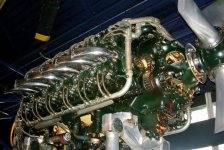I learned about the Knight sleeve valve engines in 1964. My father heard of an old car that was possibly available for sale, so we went to the place. No one was there, but we found the car in an open barn and looked it over. The name was Falcon-Knight, not one we had ever heard of. I went to the library (that is how it used to be done back then) and found that the Knight part of the name meant it had a sleeve valve engine. I looked at the pictures of the engine innards and saw why the sleeve valve design did not survive as a car engine. We did not try to buy the car. Looked at a nice Auburn roadster for $3200 back then and saw a Duesenberg sedan with a price of $11,000 in the window. I ended up buying a new Oldsmobile. Years later, I satisfied my antique car desire by buying a 1929 Elcar sedan that was driveable. It had a very conventional 6 cylinder Continental engine. One year of antique car ownership was enough for me.
Larry



